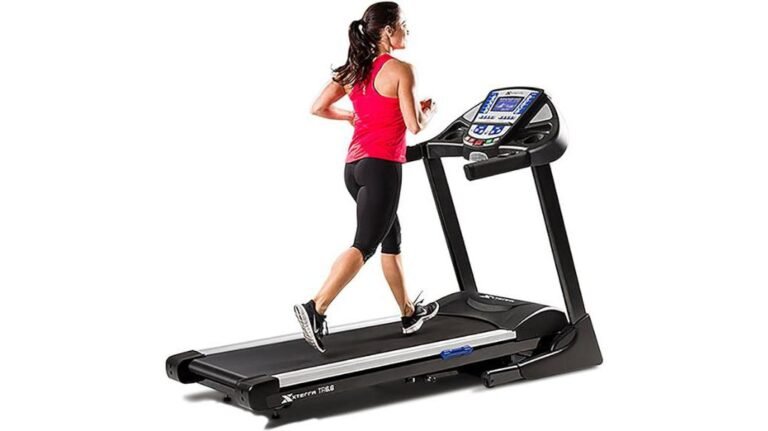How to Incorporate Active Recovery Into Your Routine
Did you know that incorporating active recovery into your routine can reduce muscle soreness by up to 30%? By engaging in strategic recovery activities, you can enhance your overall performance and well-being.
But how exactly can you make active recovery a seamless part of your regimen? Let's explore practical strategies and effective techniques that will help you optimize your recovery process and achieve your fitness goals more efficiently.
Key Takeaways
- Balance rest and activity for optimal recovery.
- Strategically schedule active recovery sessions.
- Diversify activities for long-term sustainability.
- Listen to your body cues and adapt your routine accordingly.
Benefits of Active Recovery
When you engage in active recovery, you'll experience enhanced circulation, reduced muscle soreness, and improved flexibility. These benefits are crucial for both mental rejuvenation and physical restoration. By incorporating active recovery into your routine, you aren't only aiding in muscle recovery but also preventing injuries.
The increased circulation that comes with active recovery helps deliver essential nutrients and oxygen to your muscles, facilitating quicker recovery and reducing soreness. This process not only enhances your physical restoration but also plays a significant role in injury prevention. Additionally, active recovery activities like light jogging or swimming promote blood flow, which aids in flushing out toxins and reducing inflammation, further contributing to muscle recovery.
Moreover, engaging in activities such as stretching or yoga during your active recovery sessions can improve your flexibility. This enhanced flexibility not only allows for better performance during workouts but also reduces the risk of injuries by ensuring your muscles and joints can move freely and efficiently.
Types of Active Recovery Activities
Consider incorporating a variety of active recovery activities into your routine to optimize your muscle recovery and overall physical well-being.
Yoga stretches can be a fantastic way to improve flexibility, reduce muscle tension, and promote relaxation. Practices like gentle yoga flow or restorative yoga can help you unwind while still engaging your muscles.
Mobility exercises are also crucial for enhancing joint range of motion and preventing injuries. These exercises focus on movements that increase flexibility and stability in various parts of your body, such as hip openers, shoulder stretches, and spinal twists.
Incorporating mobility exercises into your routine can aid in maintaining proper posture and joint function.
Tips for Scheduling Active Recovery
Looking to optimize your recovery routine with active rest? Scheduling your active recovery sessions strategically can make a significant difference in maximizing results and preventing burnout. Here are some tips to help you effectively incorporate active recovery into your routine:
Tips for Scheduling Active Recovery
When planning your active recovery sessions, it's essential to strike a balance between rest and activity. Here's a helpful table to guide you:
| Day | Activity | Duration | Intensity |
|---|---|---|---|
| Monday | Yoga or Stretching | 30 minutes | Low |
| Wednesday | Light Swim or Walk | 45 minutes | Moderate |
| Friday | Mobility Exercises | 20 minutes | Low to Moderate |
| Sunday | Active Rest (e.g., Tai Chi) | 1 hour | Low |
Importance of Balancing Intensity
To optimize your active recovery routine effectively, it's crucial to understand the significance of balancing intensity levels in your sessions. Intensity management plays a key role in ensuring that you reap the full benefits of your active recovery practices. Here are some essential tips to help you maintain the right balance:
- Listen to Your Body: Pay attention to how your body responds to different intensity levels during active recovery.
- Gradually Increase Intensity: Start with low to moderate intensity and gradually increase it as your body adapts.
- Incorporate Workout Variations: Include a mix of activities with varying intensity levels to prevent plateaus and keep your routine engaging.
- Avoid Overexertion: Be mindful not to push yourself too hard, as this can lead to burnout or injury.
- Consult a Professional: If unsure about intensity management or workout variations, seek guidance from a fitness expert to tailor your active recovery routine to your specific needs.
Balancing intensity is essential for long-term success in active recovery.
Incorporating Active Recovery Long-Term
Incorporating active recovery into your routine for the long term requires consistent dedication and thoughtful planning. To ensure that active recovery becomes a sustainable practice in your lifestyle, it's essential to implement long-term strategies that support your overall well-being. One key approach is to diversify your active recovery activities to prevent burnout and maintain interest. By incorporating a mix of activities such as yoga, swimming, walking, and cycling, you can keep your routine engaging and enjoyable.
Another crucial aspect of incorporating active recovery long-term is setting realistic goals and expectations. It's important to understand that progress may not always be linear, and there will be ups and downs along the way. By focusing on the process and celebrating small victories, you can stay motivated and committed to your active recovery journey.
Additionally, listening to your body and adjusting your routine as needed is vital for long-term success. Recognize when you need to dial back intensity or try new activities to prevent plateaus and adapt to your body's changing needs. By incorporating these long-term strategies and sustainable practices, you can make active recovery a lasting and beneficial part of your lifestyle.
Conclusion
Remember, incorporating active recovery into your routine is like giving your body a refreshing drink of water after a long workout. It helps you recharge, prevent injuries, and improve overall performance.
So, make sure to schedule in those light activities, focus on balance, and keep it up long-term to see the benefits. Your body will thank you for taking care of it like the precious machine it is.
Keep moving, keep recovering, and keep thriving!







